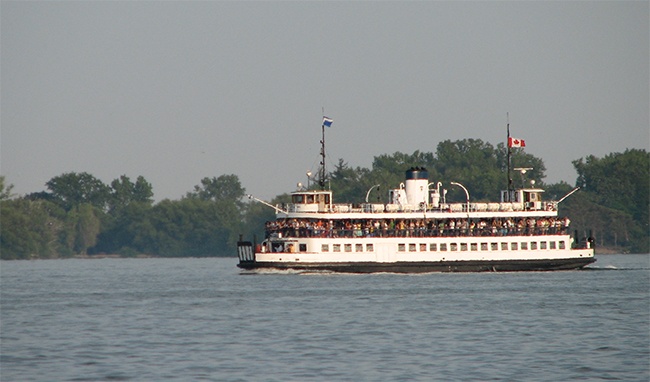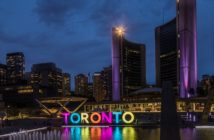Should there be an official red light district in Toronto?
According to city councillor Giorgio Mammoliti, there definitely should – and Toronto Islands would make the perfect spot, he reckons.
As you’d expect though, councillor Mammoliti has his detractors, not least the individuals and families who live on the small islands (which are only accessible by ferry). In this post we list both sides of the argument and the positives and negatives of having a dedicated area for the sex trade in Toronto.
Legal Status of Prostitution in Canada
Before we go on though it’s a good idea to talk about recent changes to the legal status of the industry.
For instance in November last year a new bill titled The Protection of Communities and Exploited Persons Act received Royal Assent.
This made it illegal to buy sexual services (with a penalty of up to five years in jail for offenders). It also made it against the law to advertise an individual’s sexual services, as well as to make money from a sex worker. It is not however, illegal to sell sexual services.
The Bill too has had its detractors, noticeably from sex workers who say it’s made the profession far more secretive, forcing it to go underground and, as a result, become more dangerous.
The Case For a Regulated Red Light District
But back to the dedicated red light district, councillor Mammoliti insists that by ‘clearing’ downtown Toronto of escort agencies, strip bars and massage parlours it would make the city more tourist and family friendly. Also safer.
Families too could rest easy in their beds in the knowledge that escorts were no longer operating in their neighbourhoods. Well, except for the householders currently living on Toronto Island, that is…

All abroad the brothel boat? A ferry heading to the Toronto Islands.
Move the sex trade to the Islands though, Mammoliti says, and it would become an attraction in itself for certain groups of people. And, as an added bonus, making the sex trade legal would bring in much needed taxes to the city council coffers.
Legalising prostitution would also give sex workers similar rights to other workers such as holiday, sick pay and pension entitlement – as well as minimum wage standards.
The Case Against ‘Fenced Off’ Red Light Areas
You probably won’t be surprised to hear that the islanders themselves don’t want their quiet little stretch of residential heaven ‘descended upon’ by the sex trade.
Not only that but the islands are pretty much child friendly, having an amusement park, zoo and a school. One of the big tenets of the new Bill is the banning of sex buying practices within sight of youngsters.
And sex trade workers don’t like the idea either.
One complained she didn’t want to be ‘herded onto the island like sheep,’ especially since they were doing fine exactly where they were. This happens to be either downtown in parlours or strip venues, or in areas such as Church and Jarvis (east of Regent Park), and in Queen West just past Spadina and going all the way to Roncesvalles. She went on to say that they blended in well within communities, chiefly because they were invisible.
If they did decide to dedicate a particular area of the city as a red light zone, at least it would cease being an issue and the council could get back to other more mundane matters such as when are the potholes in the road going to get fixed – if at all?
What do you think of the plans?
Should there be a regulated red light district in Toronto? And if so, where should it be?
Let us know your thoughts and comments below.



